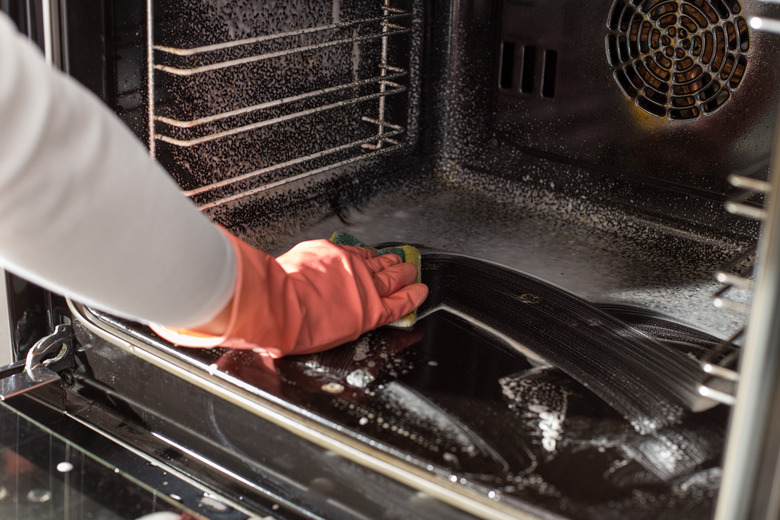Frigidaire Oven Cleaning Instructions
If you've got a Frigidaire self-cleaning oven, you may have questions about how to use it, whether you should and, if not, what the manual cleaning procedure would be. Many people are apprehensive about using self-cleaning features, and it turns out they have good reason to be — sort of.
Preparing to Self-Clean an Oven
Preparing to Self-Clean an Oven
Self-cleaning happens because your oven bakes off debris at a scorching 500 degrees Fahrenheit for two to three hours, depending which function you use. It's important to remove all racks and shelves from the inside of the oven in order to prevent damaging them or their finish. Never clean the gasket, which is the rubber tube around the door, because you could damage the rubber. This will impair door sealing effectiveness, compromising your oven's ability to retain full heat.
The operating procedures may be slightly different if you're referring to, say, the Frigidaire Gallery Convection Oven manual versus the Gallery model with dual radiant baking and roasting, but the gist is the same. Use soapy warm water to clean off any larger spillover residue spots on the oven floor, as these can superheat and cause smoke or scorch marks, especially when acidic or sugary foods like sauerkraut, tomatoes or milk are involved.
Frigidaire Self-Cleaning Oven Instructions
Frigidaire Self-Cleaning Oven Instructions
You may have a button for "speed clean," which is good for lightly soiled ovens, as well as a "clean" button. Speed clean will give you a two-hour cleaning cycle versus the standard three-hour in regular self-cleaning mode. Press your desired cleaning mode, then push the arrow up or down buttons. You should see the length of time for your selected cleaning mode — two hours or three hours.
The "lock" indicator light will now blink, but do not tamper with the door, so it locks properly. Once it's through, "CLn" will appear in the display screen. The "lock" button will glow until everything completes and "end" appears in the display or else it may show the time of day. The "clean" or "lock" light will continue glowing for at least an hour, until the oven thinks the interior has sufficiently cooled down. At this point, it will be possible to open the door again.
If you must end the procedure, note that you may not be able to operate the oven until you have completed the full procedure later.
But Should You Self-Clean?
But Should You Self-Clean?
It's debatable, depending on how old your oven is. For starters, never, ever self-clean an oven without being around to make sure nothing is going wrong. And if old grease or other debris does catch fire during the cleaning, never open the door or the rush of air could cause a serious fire. If the fire continues growing inside the oven, call the fire department and get ready to leave, if necessary.
Ovens have electrical circuits that can get fried from too much heat – and you'd be surprised how often this happens. That's why it's best to only self-clean when your warranty is still valid, because repair companies will tell you about 20 percent of their calls can be related to self-cleaning oven issues.
Other valid concerns are things like the fumes, which can be hazardous to small children and pet birds.
Manual Cleaning
Manual Cleaning
After your warranty expires, play it safe and manually clean your oven. Follow the procedures outlined in whatever product or method you're using, but never have the oven on. Always empty the racks out before cleaning, so you don't damage their finish.
To make post-cleaning clean-up minimal, put newspapers under the oven door to catch drips.
Whether you clean your oven manually or use a self-clean feature, it's critical you have a well-ventilated area. If you're sensitive to cleaner fumes, be sure to wear eye protection and only work for short durations so you can take a breather in between. Always wear protective gloves.
